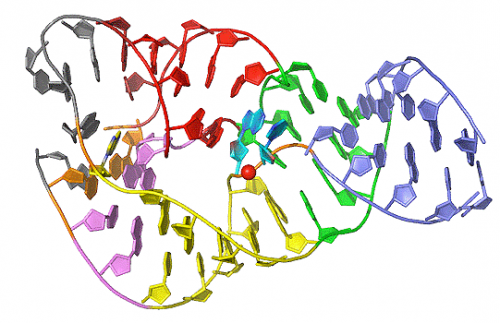In 2017, when everyone has a smartphone and wireless laptop, it may be shocking to remember that, less than two hundred years ago, every message, announcement, and decree was sent via human messenger. In fact, we have been building upon previous communication systems since the dawn of humanity. Yale Professors Ronald R. Breaker and James W. Nelson have recently found similar improvements in cells. Over billions of years, cells have been evolving their internal “network” of signaling molecules from a time of RNA dominance.
To survive and reproduce, primitive cells need to communicate to regulate essential activities like growth, digestion, and metabolism. Breaker and Nelson have spent years studying artifacts from these ancient cellular communication networks still present in our cells today to better understand the origins of life. In a recent article, they argue that primitive life used RNA, a molecule now used primarily to encode proteins, as the basis for all cellular communications. Furthermore, they state that this supports a theory of evolutionary history in which the very first cells were worlds of RNA supremacy.
The first evidence of this theory was found in the 1980s by another Yale professor, Sidney Altman, who demonstrated the ability of RNA molecules to act as enzymes, molecules that control chemical reactions, an ability only previously seen in proteins. Since then, more than 14 classes of function-performing RNA molecules, called “ribozymes,” have been discovered, and even more have been synthesized.
Well, how does one go about looking for these relics of RNA reign from billions of years ago? “RNA has a sort of metabolic primary,” Breaker said. “Even today some of the most important processes in biology are RNA based.” Similar to how remnants of our previous paper-based communications can be seen in some of our most important messages, RNA molecules still carry out some of our cells’ most fundamental tasks. The energy storage molecule ATP, the protein-factory ribosome, and signaling compounds are all derived from RNA.
More recently, the Breaker lab has discovered and explored the roles played by signaling molecules made of two RNA subunits joined together, called cyclic dinucleotides. “There are a tremendous number of RNA words that can be written using just one of the four standard nucleotides,” Breaker said. However, a very simple mechanism to further expand this RNA language is to fuse two nucleotides to create sixteen different RNA molecules that can each carry a unique message. Even more convincingly, all of the cyclic dinucleotides still present in our cells are active signal carriers, binding to important signaling sites called “Riboswitches.”
However, many continue to criticize and challenge the “RNA World” hypothesis. “If another idea comes along that has more evidence, I’m all aboard. But it has to incorporate an explanation of the data we have here,” Breaker said. Ultimately, the proof must come from the cells themselves, and whenever they are ready to tell us the answer, Breaker will be standing by, ready to decode the ancient cellular language.

